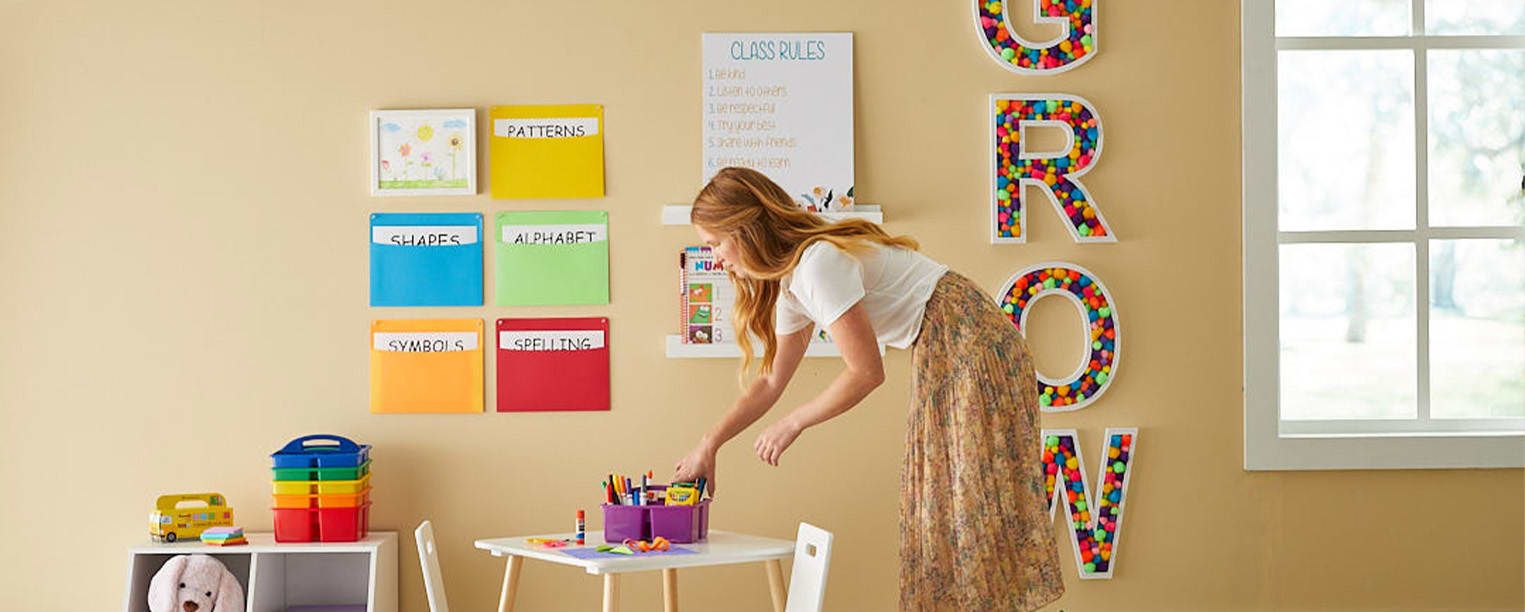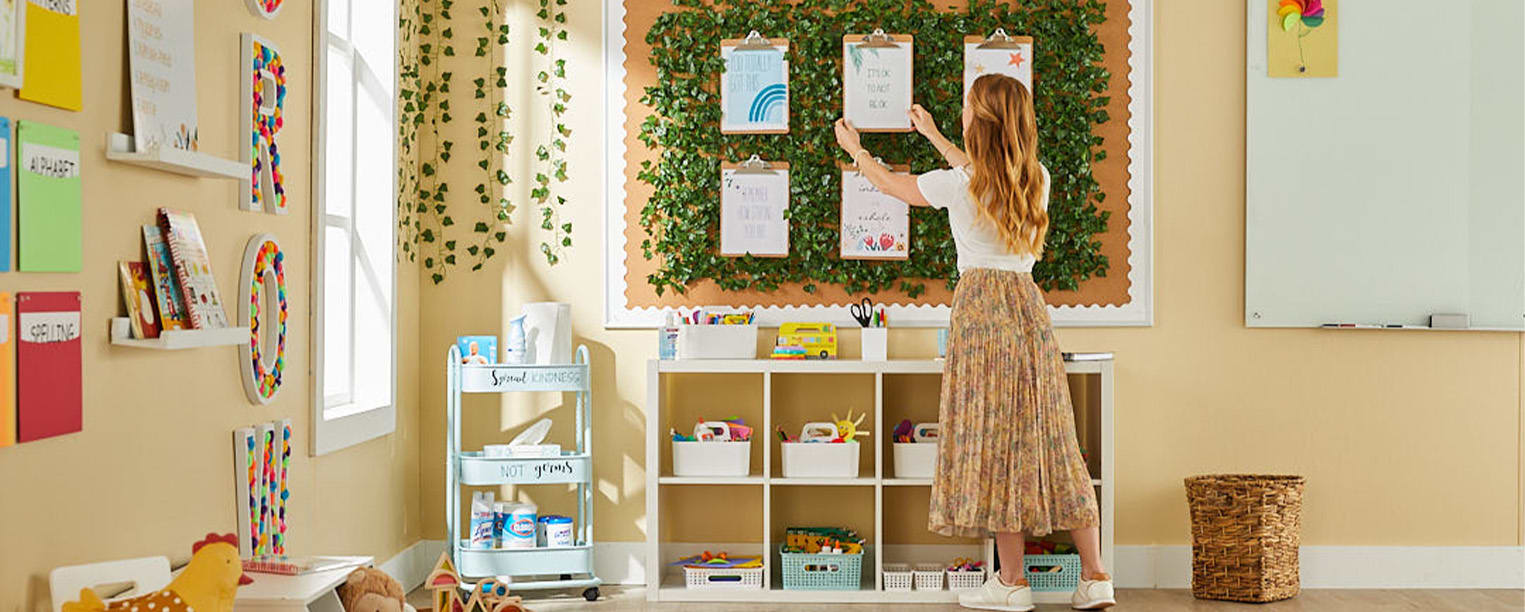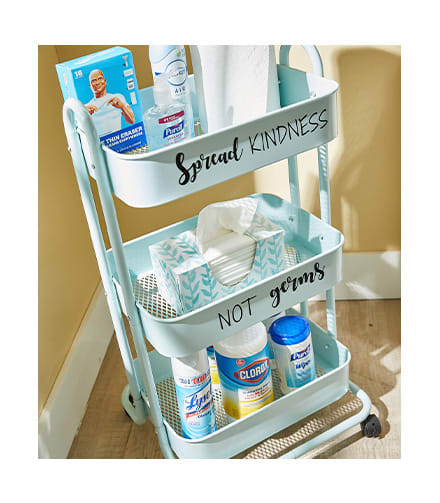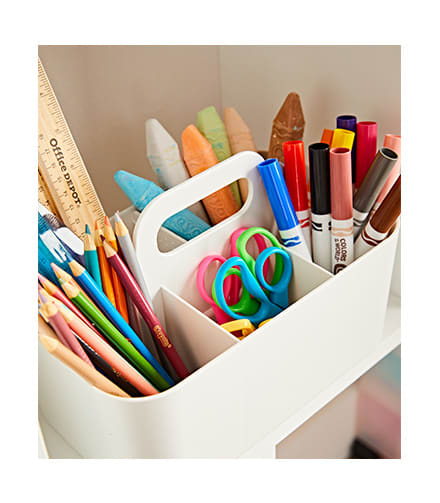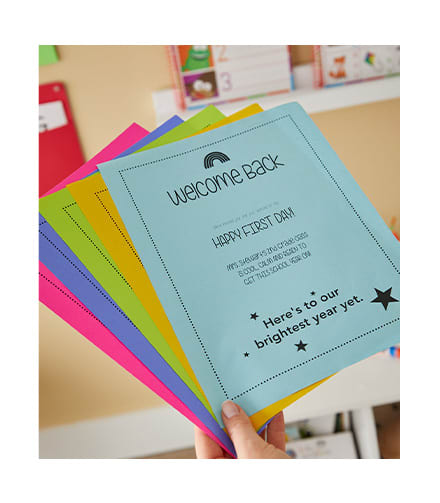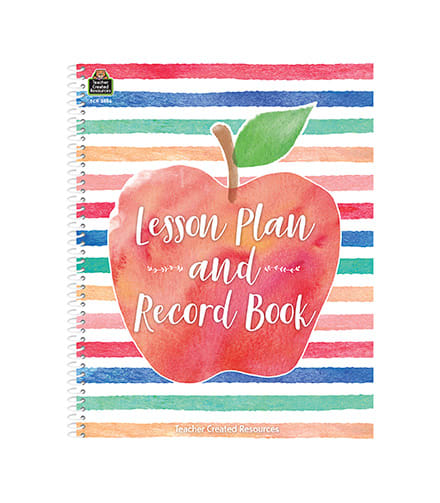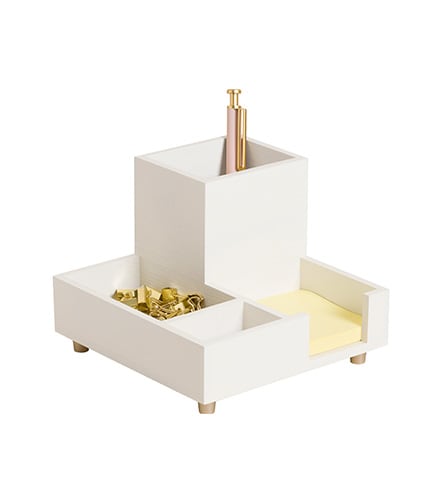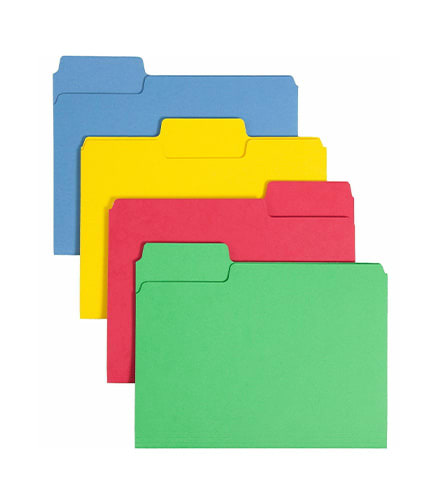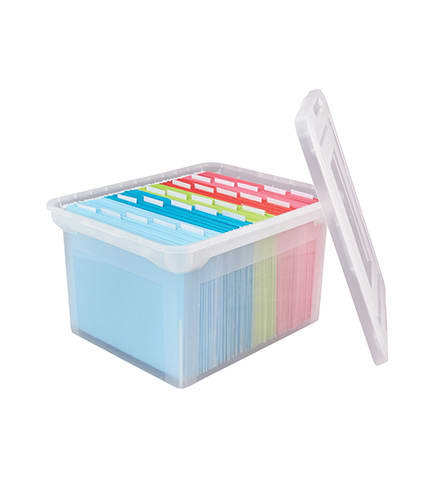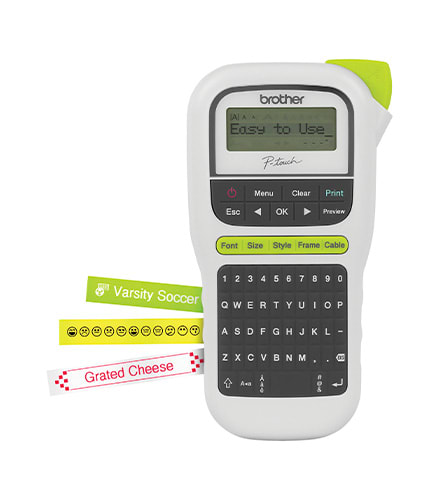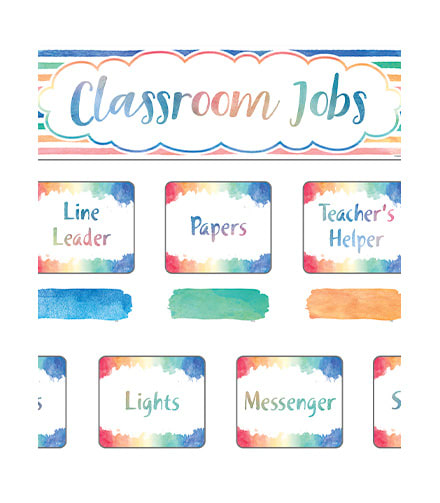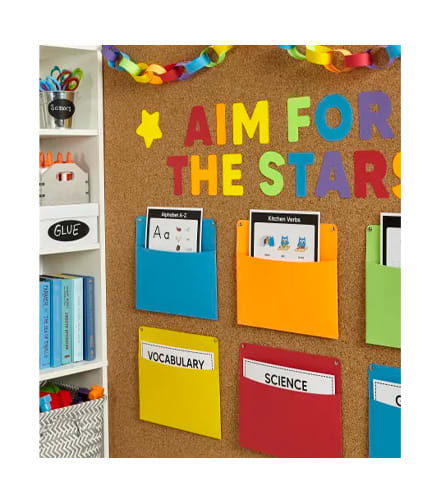Setting up and maintaining an organized classroom may be one of the most important elements of classroom management. Starting the year with good systems for storing and managing supplies can help prevent clutter and chaos during the school year. In this article, we’ll share tips to organize your classroom and products that can help you and your students keep everything in its place.
Benefits of an Organized Classroom
Having an organized classroom can really make a positive impact on both you and your students. For example, good teacher organization systems can help you save time looking for misplaced items. Just think about all the money you may save by not replacing things that were actually there all along. A clutter-free workspace may also help you meet deadlines and appear more professional to colleagues and parents.
And it's not just helpful for you. When your classroom is organized, it may be easier for your students to work independently. They can easily find the materials they need without constantly asking for help. Teaching them to put things back where they belong can also help them develop important organizational skills. This may be especially beneficial for students with learning differences who might need that extra structure and support.
9 Tips for Classroom Organization
Here are some classroom organization ideas to help you and your students get (and stay!) organized. Consider incorporating these with your class.
1. Teach Students the Importance of Staying Organized
Involve your students in keeping the classroom organized. Keeping their desk neat can help students avoid clutter-related distractions.
Allow students to clear their desks at the end of each day. Model the desired behavior by cleaning your desk completely. Let students know you expect them to return classroom materials to the right place. You can assign jobs to students that include keeping a specific space neat, such as table wiper, librarian, or board cleaner.
2. Consider the Traffic Flow of Students
Good classroom organization creates a more productive environment. The room setup, displays, and activity stations can influence students’ behavior. File cabinets and low bookcases can create defined areas and store materials. It should be clear to students where learning centers are and if they’re intended for individual or group work.
Consider arranging student desks where everyone can see you, such as in a Ushape format. If students work in teams, arrange desks in groups of four or six. Allow enough space to access high-traffic areas, such as computer stations.
3. Establish Designated Areas for Tasks
Classroom workstations let students move around the room and learn by engaging in different activities. Younger students might have stations for reading or math, and teens might use technology to learn concepts and test their knowledge.
Keep materials needed for those tasks in the work area and have students put supplies away before moving to the next task.
4. Place Storage Spaces Throughout the Room
Equip each classroom area with storage containers that include supplies for that area. Use cups, bins, caddies, and storage drawers, and label each container so students know where everything belongs.
Keep frequently used supplies near their workstation. Put seasonal materials in a closet and only bring them out when needed.
5. Use Bulletin Boards to Display Information
Bulletin boards serve many uses in a classroom. They bring in vibrant colors and display schoolwork. Here are a few ways to use bulletin boards in your classroom:
- Classroom reminders. Post a list of classroom rules and the daily schedule to help students prepare for the next activity.
- Handout holders. Mount an envelope or folder and fill it with information for students to take, such as checklists, task cards, or writing prompts.
- Clothespin displays. Affix clothespins to a bulletin board and clip student work samples to the pins.
- Post student photos. For this back-to-school exercise, have students write a few things about themselves, such as their pets, nicknames, or favorite snack, and display it along with a photo.
- Clipboard wall. Attach clipboards to a bulletin board to easily display and switch out classroom signs, rules, and other important materials for students to reference.
- Reinforce lessons. Create bulletin boards covering topics you’re studying. For a lesson on shapes, take photos of common items that represent each shape. For example, a computer monitor is a rectangle and a stop sign is an octagon. Have students put photos and cutouts for each shape under the word for it.
- Learning activities. Challenge students with a word puzzle or color matching game, or post anonymous stories and let them guess which classmate authored it. The only limits are your imagination and students’ abilities.
))
))
